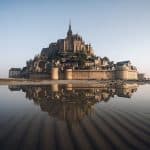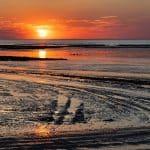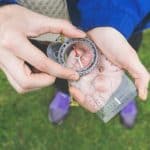As travel enthusiasts, there’s no thrill quite like the promise of adventure that the Orkney archipelago offers. Nestled off the northeastern coast of Scotland, this cluster of islands is a treasure trove of ancient secrets waiting to be unearthed. Within its boundaries, you’ll find Neolithic sites that have stood the test of time, dramatic landscapes, and an engaging local culture. But the question is, how can one navigate these sites without the aid of a tour guide? Don’t worry; we’ve got you covered.
Planning Your Trip
If you plan to visit Orkney without a guide, meticulous planning will be your best ally. Start by deciding which islands you wish to visit. Mainland Orkney is the largest island and serves as the main hub. Here, you’ll find Kirkwall, Orkney’s largest town, and most of the archipelago’s famous Neolithic sites like Skara Brae and the Ring of Brodgar. Other islands, like Hoy and Rousay, also have noteworthy attractions.
Dans le meme genre : How to find the best seafood restaurants on the Isle of Skye?
Next, decide on the best time to go. Orkney’s climate is mild, but it can be quite windy. Late spring to early autumn is often the best time, as you’ll have longer daylight hours to explore. However, visiting in winter will give you a chance to witness the Northern Lights.
Getting Around
Transportation is a crucial aspect of your visit. To reach Orkney, you can take a ferry from the Scottish mainland. There are routes from Scrabster, Gills Bay or Aberdeen. Once on the islands, the most practical way to get around is by car or bike. Car and bike hire services are available in Kirkwall. There’s also a reliable bus service, although this will require careful planning to align with your itinerary.
A voir aussi : How can tourists best experience the Viking Festival in York?
Exploring Ancient Sites
When it comes to the Neolithic sites in Orkney, there’s no shortage of options. Skara Brae, Europe’s most complete Neolithic village, is a must-see. This UNESCO World Heritage site dates back to around 3200 BC and offers a unique glimpse into the daily lives of our ancestors.
The Ring of Brodgar and the Stones of Stenness are equally impressive. These stone circles, located near each other, are older than Stonehenge and the Great Pyramids!
It’s worth noting that while you won’t have a guide to provide context, the highly informative signage at these sites will help enrich your understanding of their significance.
Immersing in Local Culture
Beyond the ancient sites, taking the time to immerse yourself in Orkney’s local culture can be a rewarding experience. Start your day in Kirkwall by visiting the St. Magnus Cathedral, a stunning example of Romanesque architecture.
Then, take a stroll along the quaint streets and pop into local shops selling handmade crafts and artisanal goods. The Orkney Museum, also in Kirkwall, is a treasure trove of artifacts that trace the islands’ history from the Stone Age to the present day.
Going Off The Beaten Path
For the more adventurous, consider venturing beyond the key tourist destinations. The island of Hoy, for instance, offers dramatic landscapes with towering cliffs and the famous Old Man of Hoy sea stack.
On Rousay, you’ll find Midhowe Cairn and the Brae of Eynhallow, which are not as frequented as other sites but offer a unique look into Orkney’s ancient past.
Remember, travelling without a guide means being responsible for your safety. Ensure you’re well-prepared, respect the environment and heritage sites, and listen to any advice from locals. Orkney is a place like no other, filled with ancient mysteries and stories waiting to be discovered.
Enjoying Orkney’s Landscapes and Wildlife
One of the key attractions of the Orkney Islands is their stunning landscapes and diverse wildlife. The islands boast a vast array of habitats, from windswept cliffs and pristine beaches to lush farmland and expansive moorland. Orkney’s natural beauty is a spectacle in itself and offers ample opportunities for outdoor activities such as hiking, cycling, and bird-watching.
Bird enthusiasts will find a visit to Papa Westray rewarding. This island is home to a large variety of seabirds including puffins, fulmars, and kittiwakes. Seals are also a common sight on the coasts of the islands, while otters can occasionally be spotted in the quieter inlets and bays.
As you traverse these landscapes, you will also come across a number of ancient ruins that are not as well-known as Skara Brae or the Ring of Brodgar. These include smaller standing stones, chambered cairns, and ancient settlements. Exploring these lesser-known sights, such as the Maeshowe Chambered Cairn or the Brough of Birsay, can be just as fascinating and rewarding.
Remember that the weather in Orkney can be unpredictable, so be sure to pack clothing suitable for all conditions. Also, keep in mind that some areas of the islands are privately owned and often used for farming. Always respect the land and wildlife by following the Scottish Outdoor Access Code.
Sampling Orkney’s Food and Drink
Your trip to Orkney wouldn’t be complete without sampling the local food and drink. Orkney’s rich agricultural heritage and clear coastal waters result in a wealth of high-quality local produce.
Seafood is a particular highlight, with local menus often featuring fresh crab, lobster, scallops, and mackerel. Try the Orkney cheddar, a locally made cheese with a distinctive flavor, or sample traditional ‘bere bannocks’ – a type of flatbread made from an ancient strain of barley.
The islands also have a thriving drinks industry. Be sure to visit the Highland Park distillery in Kirkwall for a taste of their world-famous whisky. Orkney also has several craft breweries and even a winery, all offering tours and tastings.
Conclusion
Whether you’re fascinated by the Neolithic history of Orkney, the natural landscapes, local culture or the cuisine, visiting Orkney without a tour guide is entirely feasible. With a bit of planning, you can easily navigate the sites, immerse yourself in the local culture, go off the beaten track, and even sample some of the finest Scottish food and drink.
It’s important to mention that a self-guided trip to Orkney is not just about the destination, but also about the journey. Exploring at your own pace allows you the freedom to truly absorb the unique atmosphere of these ancient islands. The stories and secrets of Orkney are waiting to be discovered, so why not start planning your trip today?











